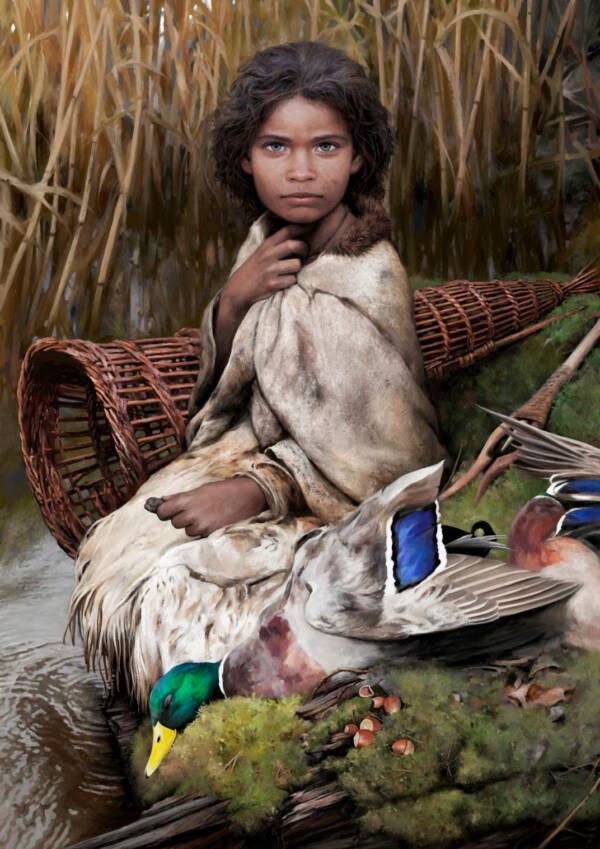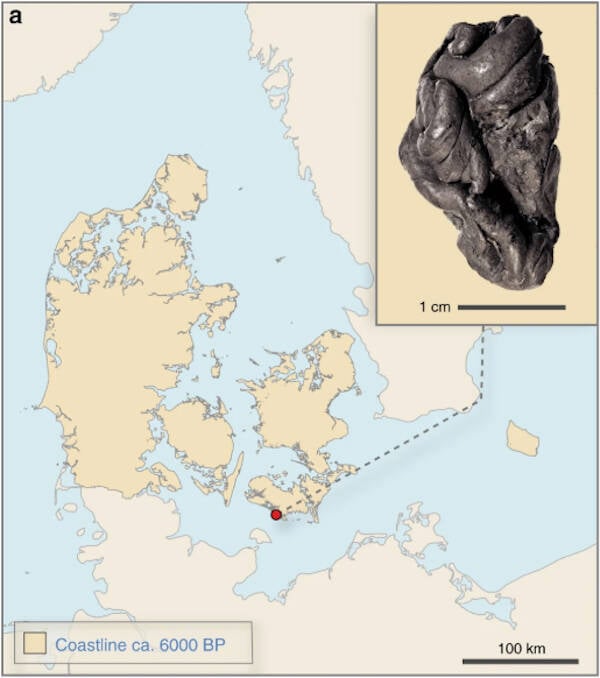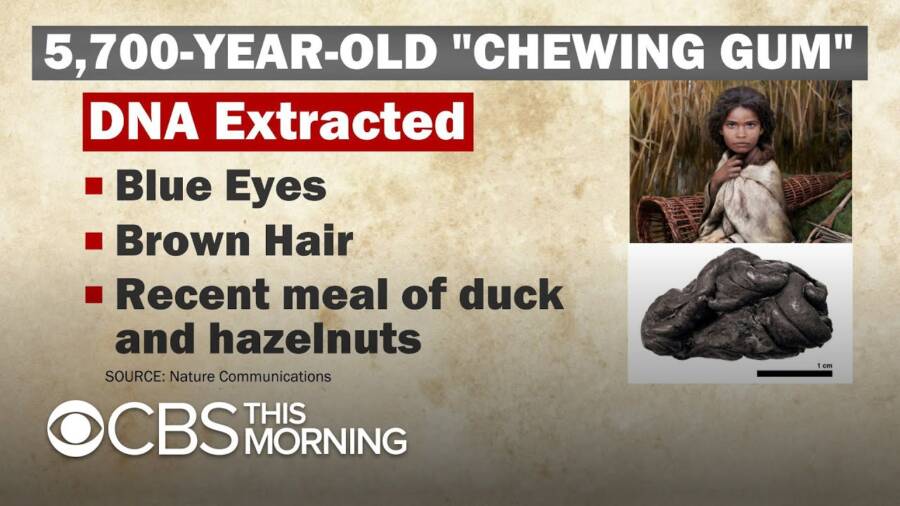Unearthing Secrets: What a 5,700-Year-Old Chewing Gum Reveals About Our Ancient Ancestors
Researchers could also determine what she likely looked like, with dark skin, dark hair, and blue eyes.

Tom BjörklundExperts learned that the chewer was female and potentially a child who commonly ate hazelnuts and duck. This illustration was rendered according to researchers’ conclusions.
Schroeder added that the ancient person’s appearance is particularly interesting “because it’s the same combination of physical traits that apparently was very common in Mesolithic Europe.”
According to this find, Schroeder suggested, the woman was likely genetically linked to people in Spain or Belgium. Schroeder believes this finding also supports the notion that two different waves of people landed in Scandinavia after the ice sheets vanished 11,000 to 12,000 years ago.
Even more specifically, the DNA results revealed traces of plant and animal DNA in the gum, like hazelnuts and duck, which suggested that these items may have been part of the individual’s diet.
But the Syltholm dig site is believed to be from a time when farming had already arrived in Scandinavia, yet the woman’s genome has no farmer ancestry in it.
As such, researchers surmised that the woman was of a group of western hunter-gatherers that remained separate from the Scandinavian farmers.
“It looks like in these parts maybe you have pockets of hunter-gatherers still surviving, or living side-by-side with farmers for hundreds of years,” concluded Schroeder.

Nature CommunicationsThe dig site is fortunately rather muddy, aiding even further to the preservation process.
The ancient gum also revealed the bacterial evidence of gum disease, and Streptococcus pneumoniae, which causes pneumonia to this day.














Post Comment